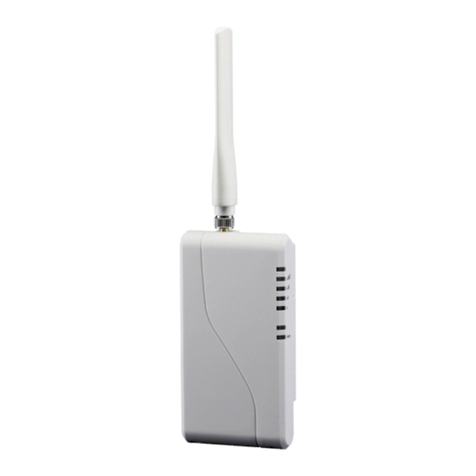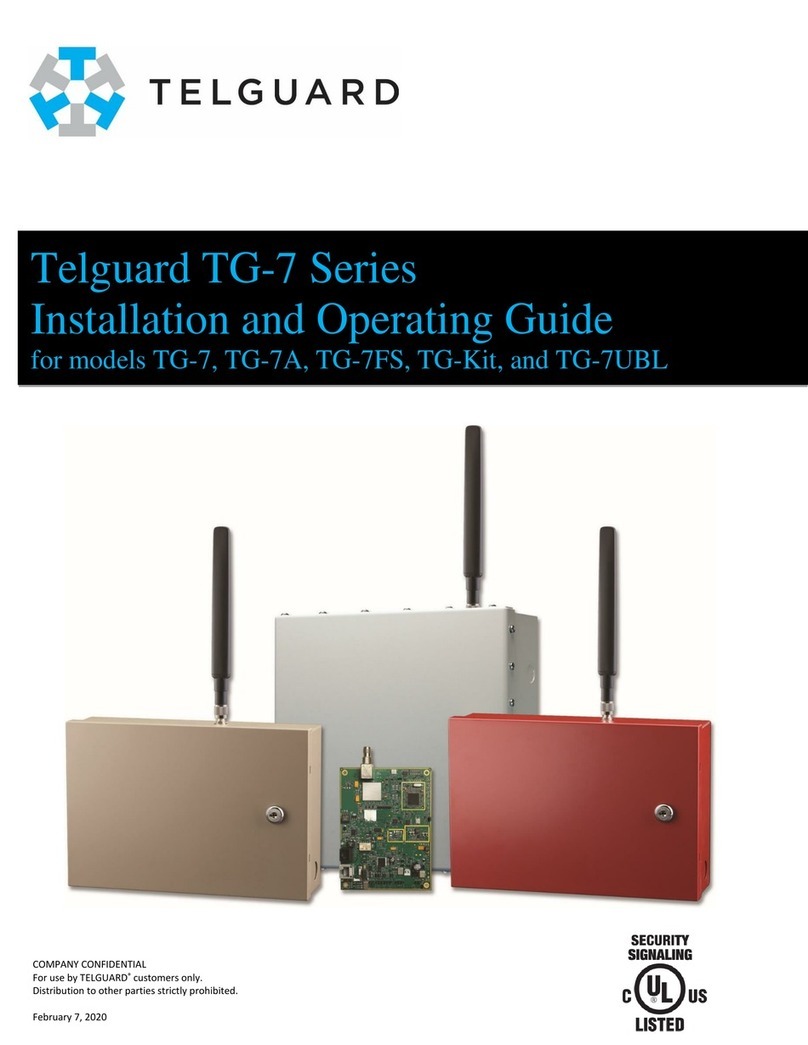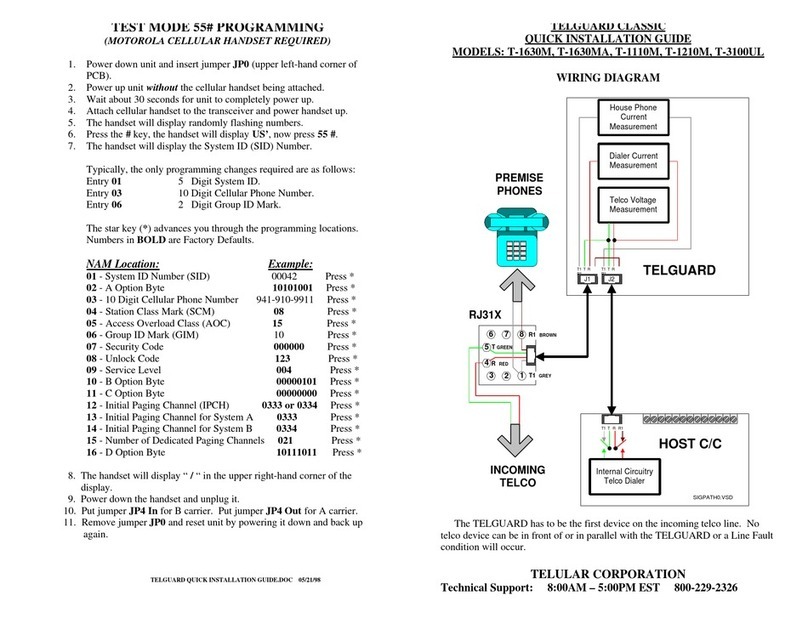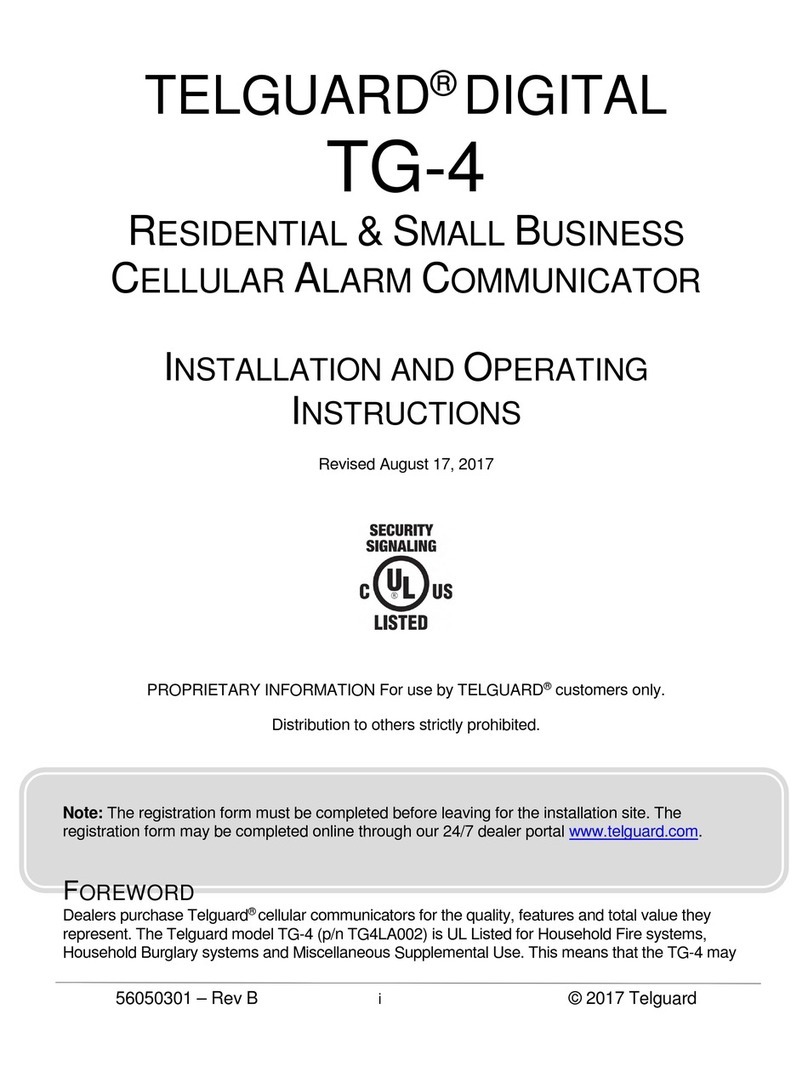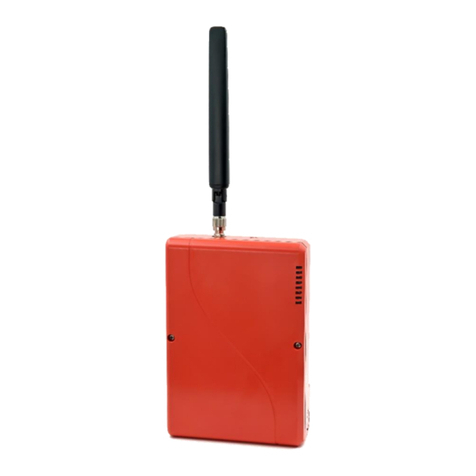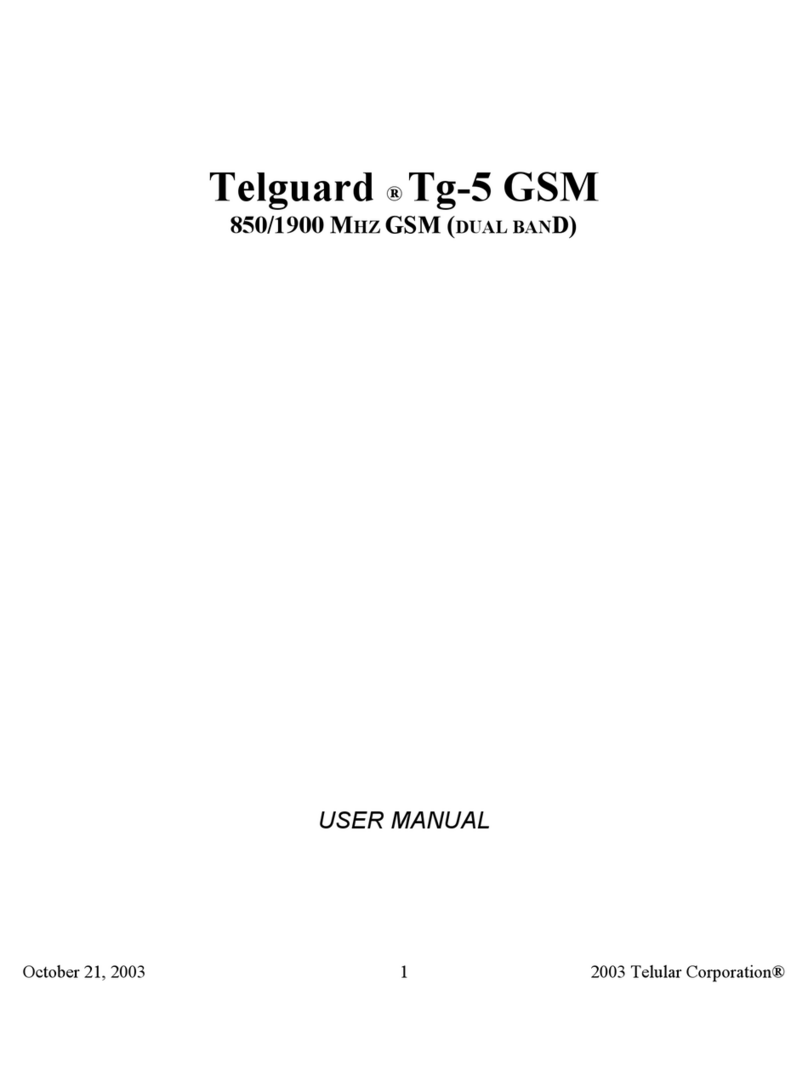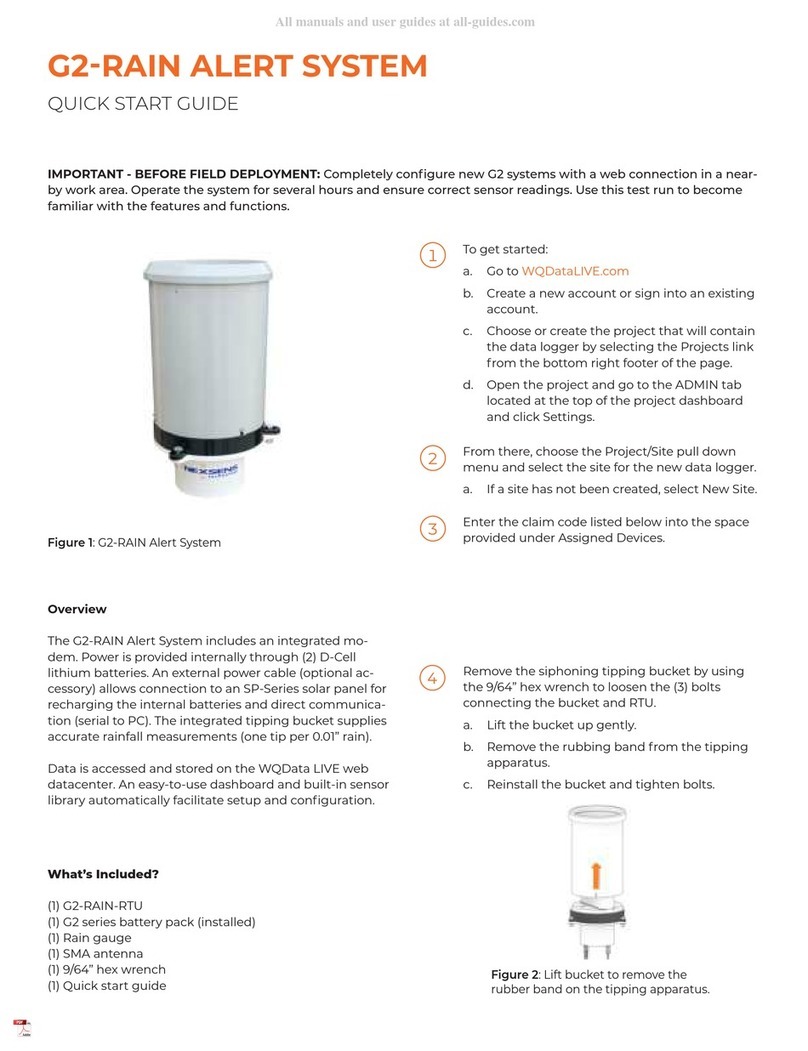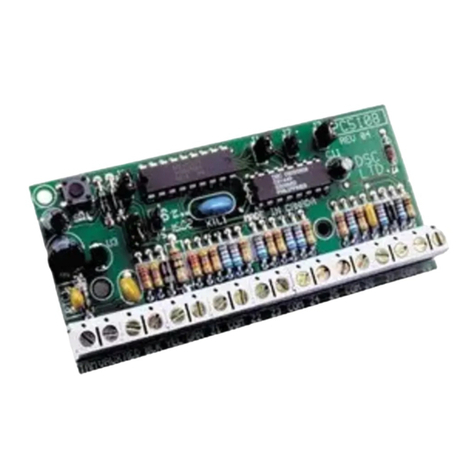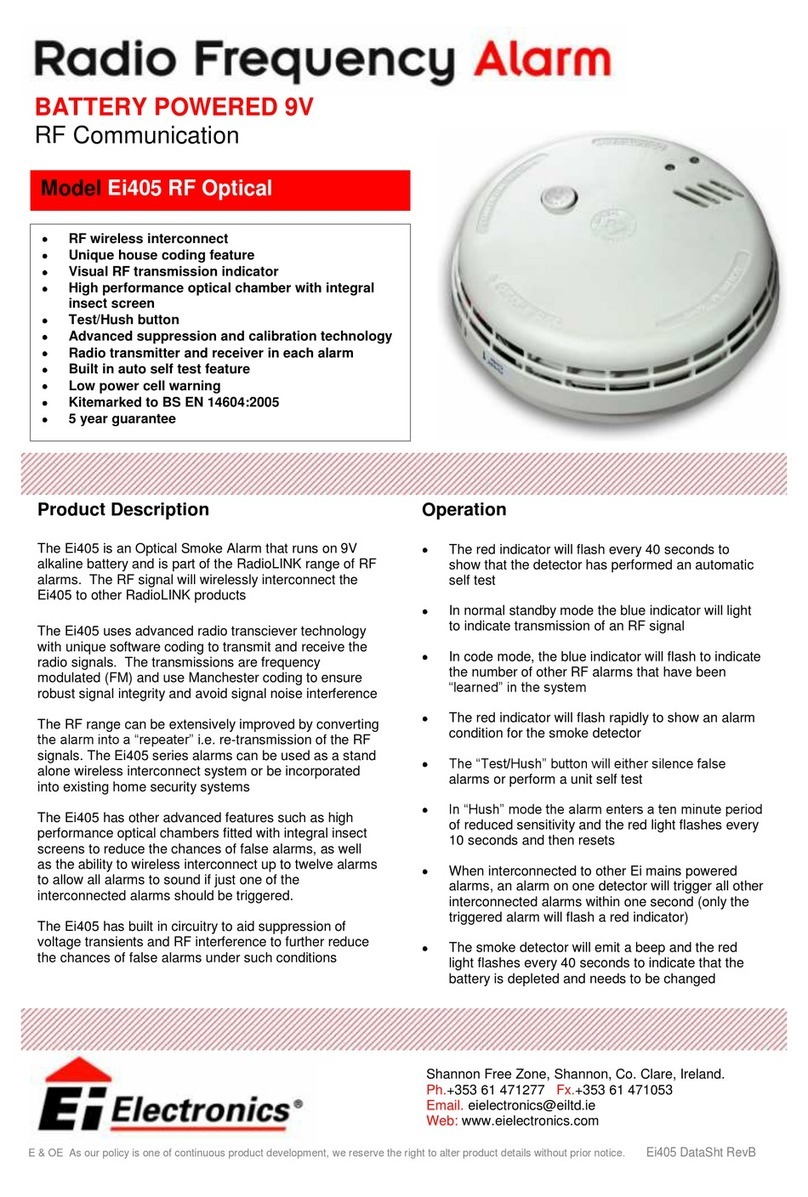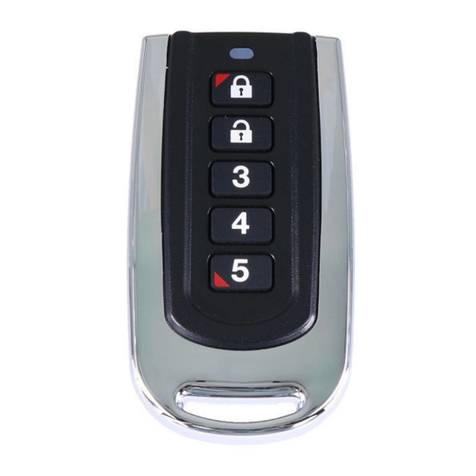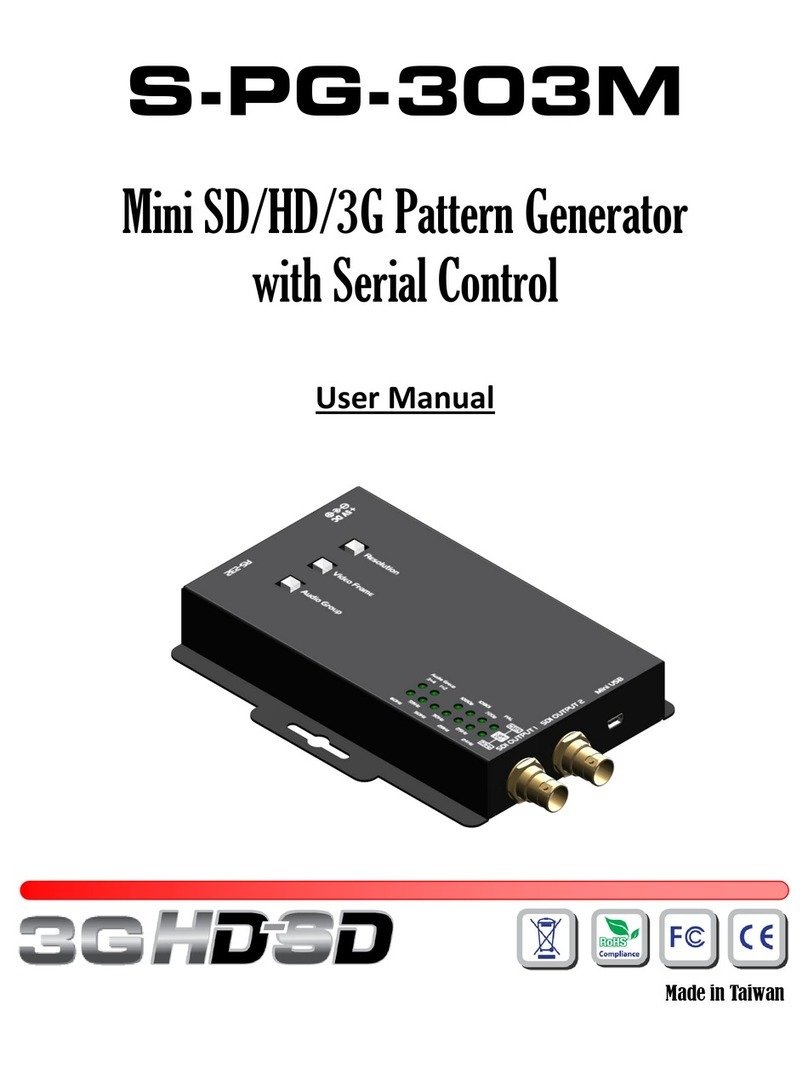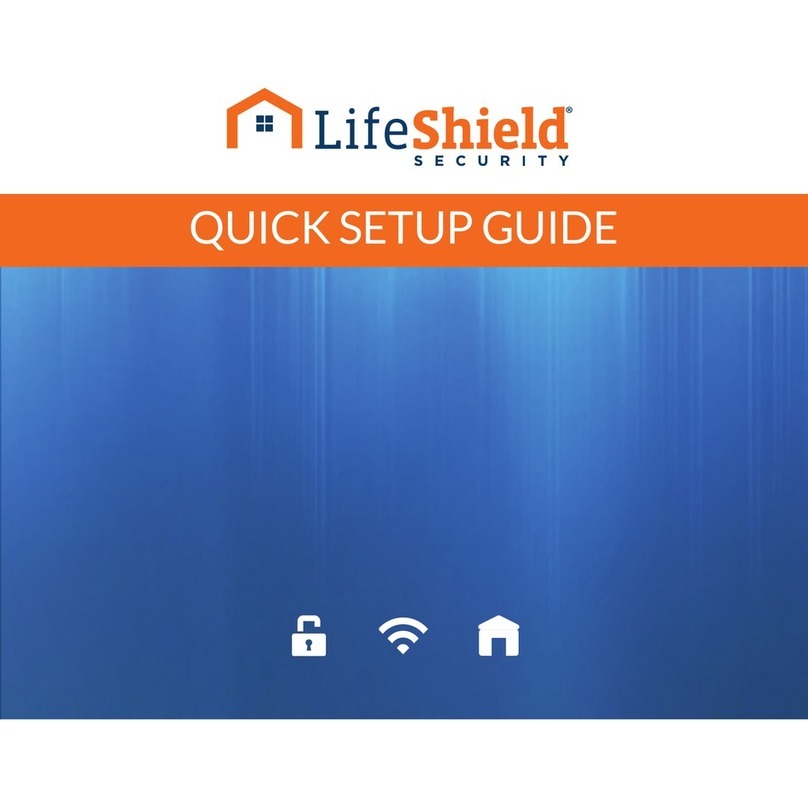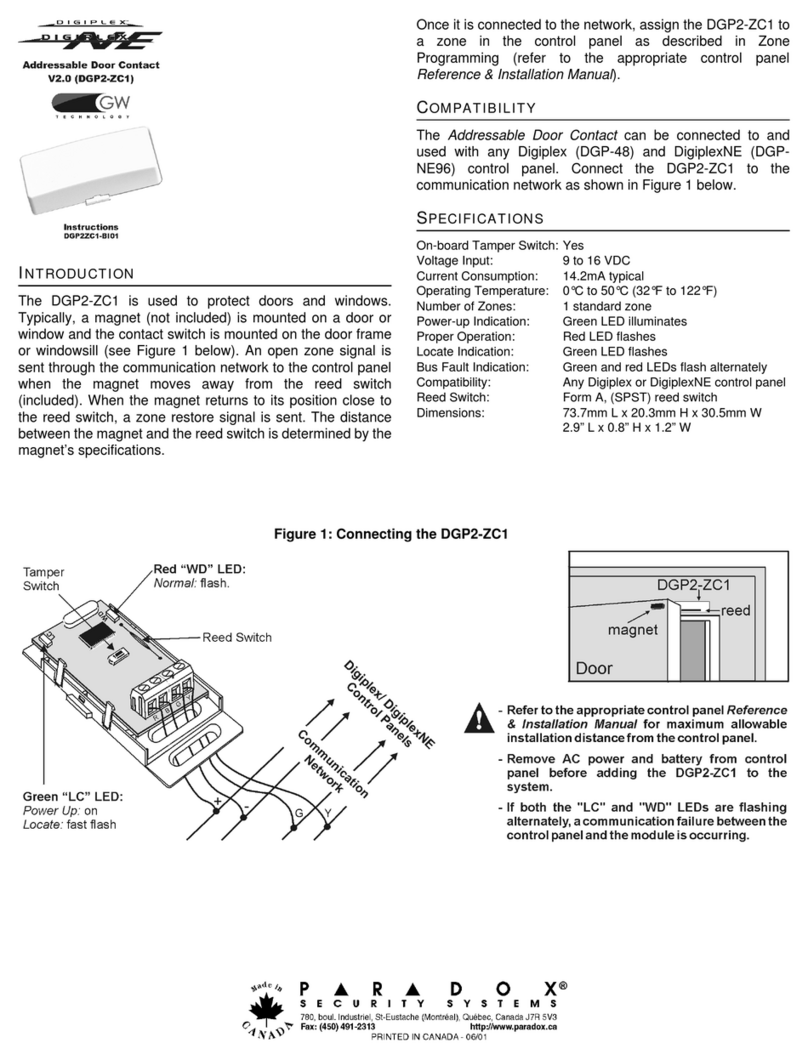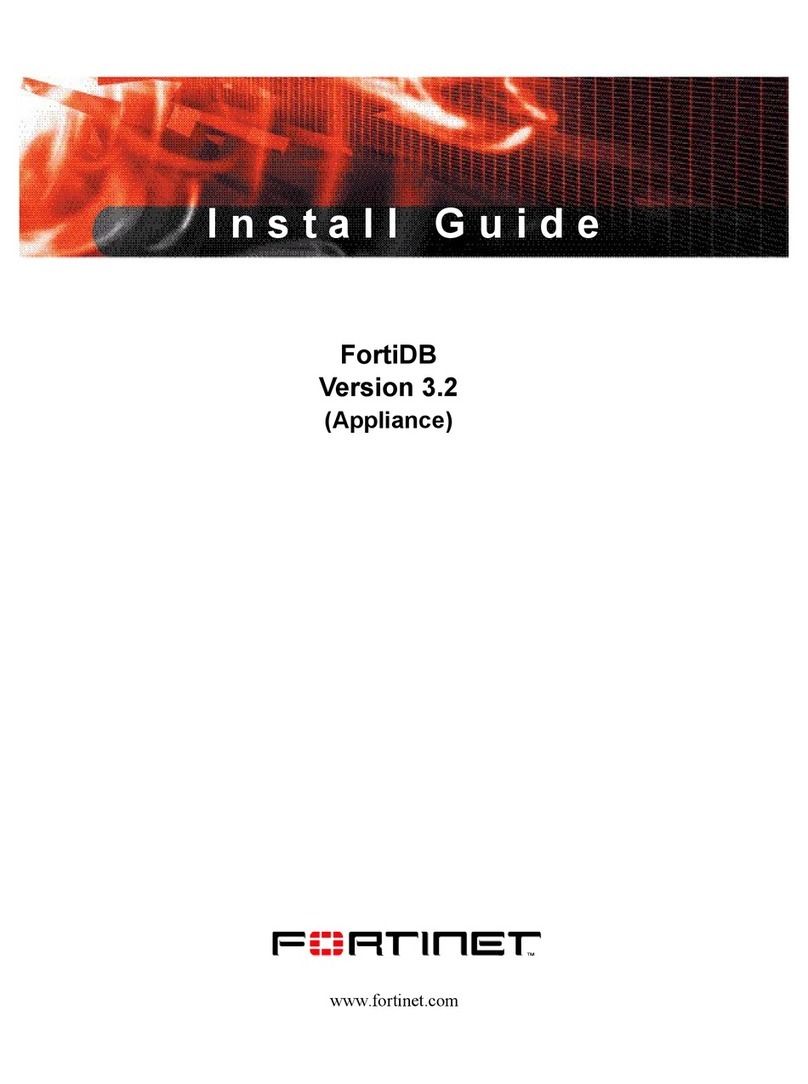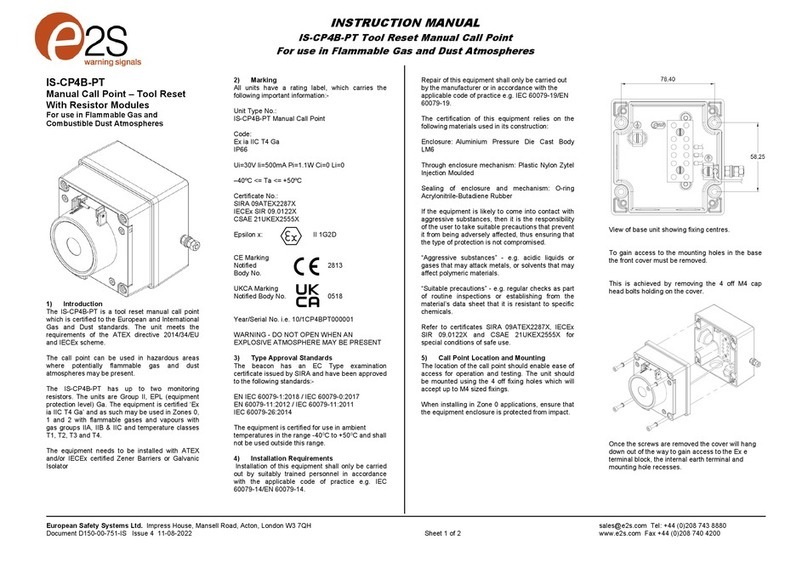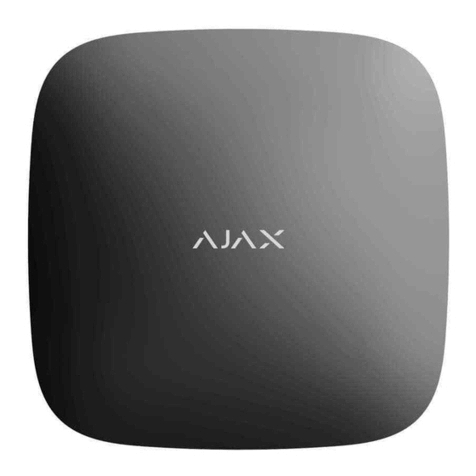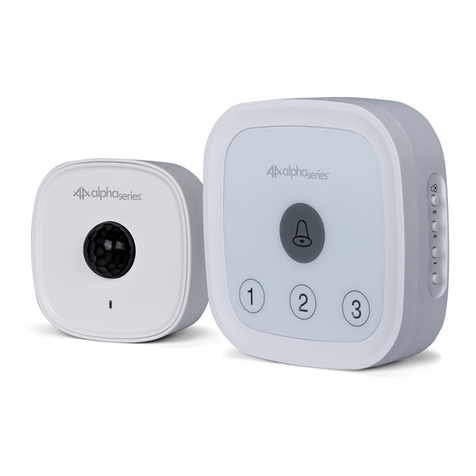
56050001 – Rev A 4 © 2017 Telguard
Low/Missing Battery Condition (LBC)
The Telguard checks the backup battery voltage on initial power-up and every 60 seconds thereafter. If the battery voltage
is less than 11.6 volts, it changes from ‘good’ to ‘bad’ state and a LBC is declared whereby the STC LED blinks twice, and
the STC relay trips. When the battery voltage increases to 12.1 volts, the STC LED and STC relay restore. The Telguard
also indicates Low/missing Battery Condition (LBC) when the battery charger fails or the battery fails the periodic load test.
AC Failure Condition (ACFC)
AC failure condition (ACFC) is detected immediately when the AC power drops below 102 VAC. When this condition is
detected, the STC LED blinks once, the AC Power LED turns off, and the STC trip output is activated after 2 hours. When
AC power returns to normal (106 VAC), the AC Power LED turns on immediately and the STC trip output restores after
60 seconds.
Note: If the Telguard is being powered through its DC connection, a Low Power Failure (LPF) will occur if the DC
power drops below 5.1VDC and restore after reaching >5.6VDC. LPF will present itself in the same manner as the
ACFC.
Dial Tone Failure (DTF)
The Telguard provides a voltage supply and other signaling to the panel like a telephone central office. A Dial Tone Failure
(DTF) is declared when unable to provide proper telephone signaling to the panel. The STC LED will flash 6 times and the
STC relay will trip.
Note: This condition will require contacting Telguard Technical Support for resolution.
Catastrophic Failure (CF)
Catastrophic Failure (CF) is any condition that causes the Telguard to stop functioning at all levels. The most common CF
is AC power failure followed by a complete discharge of the backup battery. The STC1 and STC2 trip outputs are activated
and the visible indication is loss of all LED activity. Total loss of power to the Telguard does not prevent transmission of
alarm messages from the alarm panel “through” the Telguard and out over an operative phone line.
Telguard Automatic Self-Test Report
The automatic self-test signal schedule is programmable as prescribed when the Telguard is registered. The central station
receives the automatic self-test report in the same format that the alarm panel normally uses for communication over the
Telco line. The self-test code and testing frequency are set during registration, and can accommodate any code the Central
Station expects. The TCC captures all current and historical data pertaining to the operation of the Telguard when it
processes the automatic self-test signal. This data contains current operational status (C.O.S.) of the Telguard such as "All
OK", "AC fail condition", "low/missing battery condition", or any combination of these as well as the current signal
strength. In addition, the data also contains historical data for supervisory events that occurred since the last self-test or
remote query report signal was transmitted. This data includes the number of occurrences of AC fail conditions, low battery
conditions, line fault conditions, communications failure conditions and no cellular service conditions. This additional
information is available by contacting Telguard Technical Support or by visiting www.Telguard.com (dealer log-in
credentials required).
Telguard Remote Query Capability
Although the Telguard has the capability for an automatic self-test, a separate feature is provided for determining the current
operational status of every Telguard. This feature is called Remote Query and is used to provide real-time operational status
for the Telguard on-demand. It is useful in resolving STC events that are reported by the alarm panel to the central station.
The Remote Query is available via www.Telguard.com. The Remote Query causes the Telguard to upload current
operational status data and historical data, just as the automatic self-test described above, except that the query signal is
controlled by the one who initiates it. The query signal is held in the Telguard database at the TCC for review and is not
forwarded on to the central station.
Programmable Supervisory Trip Output (STC) Relays
The Telguard has two supervisory relay trip outputs (STC1 normally open and STC2 normally closed) and both are
energized in a powered-up state when no system troubles exist. This enables a supervisory trouble code to be transmitted to
the central station when connected to an alarm panel’s 24-hour instant input zone. The STC relays are programmable during
registration on www.telguard.com, to meet virtually any installation requirement.




















